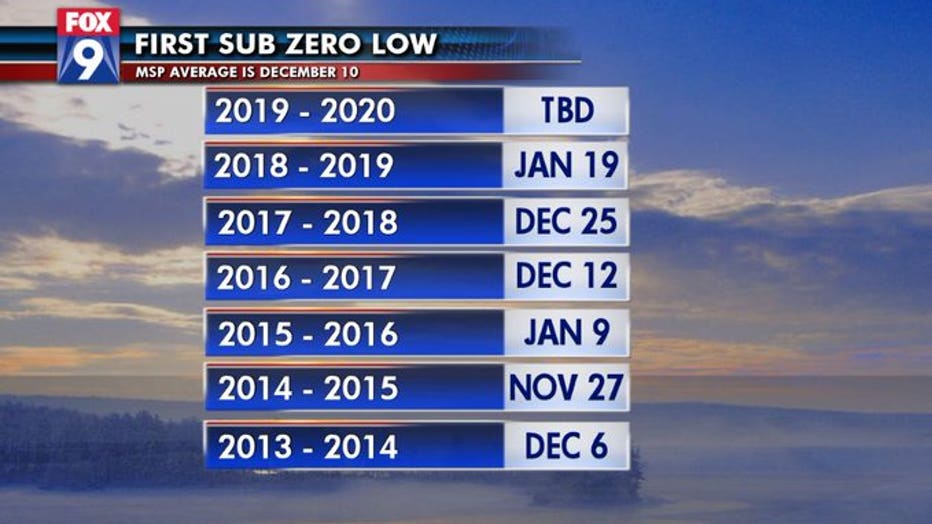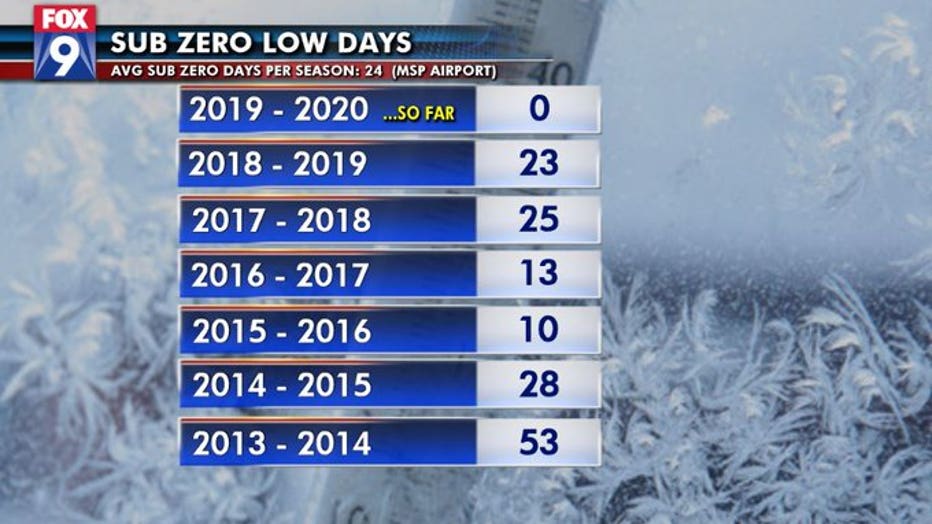Subzero temps are coming
Now that we are a week into December, we are very much getting into the heart of the cold season for much of North America. Around here, that means subzero temperatures and even colder wind chills. But how common are the extremely cold temperatures this time of year?

The short answer; quite common. When looking back on our climate since 1872, the Twin Cities sees our first subzero temperature right around a third of the way into the month. That may feel early into the winter season though because last year was the latest we’ve ever hit that first subzero reading… coming in on January 19th. Amazingly, we still managed to pick up 23 calendar days where temperatures dropped below zero… which is really close to average.

When looking back at individual years, much like Minnesota winters, the stats are all over the place. Last year was the latest we’ve ever hitting that first subzero, but back in 2014, it was almost 2 months sooner, happening on November 27th.
So why the wide range in variability? Well, some fairly rare conditions are needed for temperatures to drop below zero that only occur under certain weather patterns. You need very dry Canadian air, usually light winds, fairly clear skies, and maybe most important is at least a little bit of snow on the ground. It’s that snow that helps insulate very cold Canadian air as it moves south into the U.S. This allows that air to maintain its polar characteristics while it travels closer and closer to the Equator. If you go back and look at the number of times we get below zero without snow cover… in most cases, you won’t count higher than 2 or 3 for any given winter. This is another reason why we typically see the most subzero temperatures in the month of January because there is usually a very healthy snowpack statewide through much of the month.
So, with a decent snowpack in the Twin Cities (even though it’s been dwindling a bit for a few days), and at least a little more likely on the way Monday, subzero temperatures look like a guarantee toward the middle of the week. One of the few questions remains is just how much fresh snow do we receive and how far below zero does the thermometer go?

